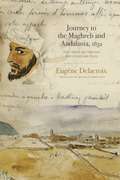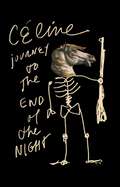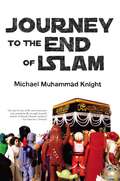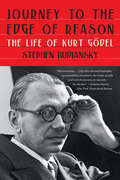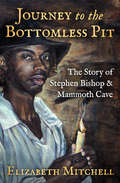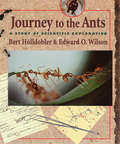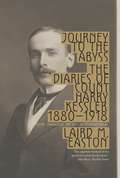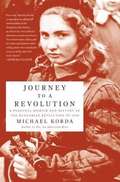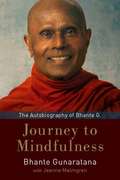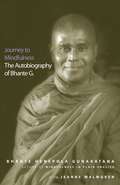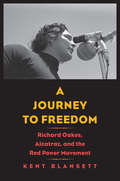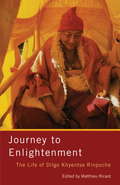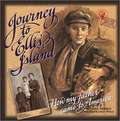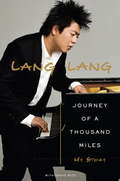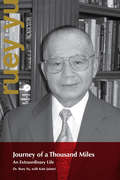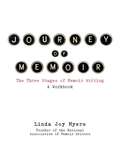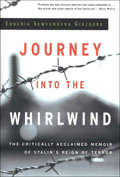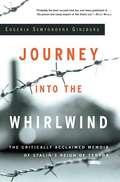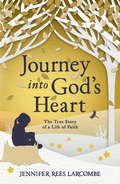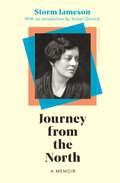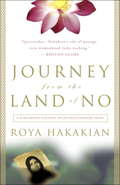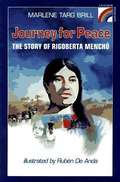- Table View
- List View
Journey to the Maghreb and Andalusia, 1832: The Travel Notebooks and Other Writings
by Eugène DelacroixIn 1832, Eugène Delacroix accompanied a French diplomatic mission to Morocco, the first leg of a journey through the Maghreb and Andalusia that left an indelible impression on the painter. This comprehensive, annotated English-language translation of his notes and essays about this formative trip makes available a classic example of travel writing about the "Orient" from the era and provides a unique picture of the region against the backdrop of the French conquest of Algeria.Delacroix’s travels in Morocco, Algeria, and southern Spain led him to discover a culture about which he had held only imperfect and stereotypical ideas and provided a rich store of images that fed his imagination forever after. He wrote extensively about these experiences in several stunningly beautiful notebooks, noting the places he visited, routes he followed, scenes he observed, and people he encountered. Later, Delacroix wrote two articles about the trip, "A Jewish Wedding in Morocco" and the recently discovered "Memories of a Visit to Morocco," in which he shared these extraordinary experiences, revealing how deeply influential the trip was to his art and career. Never before translated into English, Journey to the Maghreb and Andalusia, 1832 includes Delacroix’s two articles, four previously known travel notebooks, fragments of two additional, recently discovered notebooks, and numerous notes and drafts. Michèle Hannoosh supplements these with an insightful introduction, full critical notes, appendices, and biographies, creating an essential volume for scholars and readers interested in Delacroix, French art history, Northern Africa, and nineteenth-century travel and culture.
Journey to the Maghreb and Andalusia, 1832: The Travel Notebooks and Other Writings
by Eugène DelacroixIn 1832, Eugène Delacroix accompanied a French diplomatic mission to Morocco, the first leg of a journey through the Maghreb and Andalusia that left an indelible impression on the painter. This comprehensive, annotated English-language translation of his notes and essays about this formative trip makes available a classic example of travel writing about the “Orient” from the era and provides a unique picture of the region against the backdrop of the French conquest of Algeria.Delacroix’s travels in Morocco, Algeria, and southern Spain led him to discover a culture about which he had held only imperfect and stereotypical ideas and provided a rich store of images that fed his imagination forever after. He wrote extensively about these experiences in several stunningly beautiful notebooks, noting the places he visited, routes he followed, scenes he observed, and people he encountered. Later, Delacroix wrote two articles about the trip, “A Jewish Wedding in Morocco” and the recently discovered “Memories of a Visit to Morocco,” in which he shared these extraordinary experiences, revealing how deeply influential the trip was to his art and career. Never before translated into English, Journey to the Maghreb and Andalusia, 1832 includes Delacroix’s two articles, four previously known travel notebooks, fragments of two additional, recently discovered notebooks, and numerous notes and drafts. Michèle Hannoosh supplements these with an insightful introduction, full critical notes, appendices, and biographies, creating an essential volume for scholars and readers interested in Delacroix, French art history, Northern Africa, and nineteenth-century travel and culture.
Journey to the End of the Night
by Louis-Ferdinand CélineCéline’s masterpiece—colloquial, polemic, hyper-realistic, boiling over with black humor Céline’s masterpiece—colloquial, polemic, hyper realistic—boils over with bitter humor and revulsion at society’s idiocy and hypocrisy: Journey to the End of the Night is a literary symphony of cruelty and violence that hurtles through the improbable travels of the petit bourgeois (and largely autobiographical) antihero, Bardamu: from the trenches of WWI, to the African jungle, to New York, to the Ford Factory in Detroit, and finally to life in Paris as a failed doctor. Ralph Manheim’s pitch-perfect translation captures Céline’s savage energy, and a dynamic afterword by William T. Vollmann presents a fresh, furiously alive take on this astonishing novel.
Journey to the End of Islam
by Michael Muhammad KnightIn Journey to the End of Islam, Michael Muhammad Knight whose work has led to him is hailed as both the Jack Kerouac and Hunter S. Thompson of American Islam wanders through Muslim countries, navigating between conflicting visions of his religion.
Journey to the Edge of Reason: The Life Of Kurt Gödel
by Stephen BudianskyThe first major biography of the logician and mathematician whose Incompleteness Theorems helped launch a modern scientific revolution. Nearly a hundred years after its publication, Kurt Gödel’s famous proof that every mathematical system must contain propositions that are true—yet never provable—continues to unsettle mathematics, philosophy, and computer science. Yet unlike Einstein, with whom he formed a warm and abiding friendship, Gödel has long escaped all but the most casual scrutiny of his life. Stephen Budiansky’s Journey to the Edge of Reason is the first biography to fully draw upon Gödel’s voluminous letters and writings—including a never-before-transcribed shorthand diary of his most intimate thoughts—to explore Gödel’s profound intellectual friendships, his moving relationship with his mother, his troubled yet devoted marriage, and the debilitating bouts of paranoia that ultimately took his life. It also offers an intimate portrait of the scientific and intellectual circles in prewar Vienna, a haunting account of Gödel’s and Jewish intellectuals’ flight from Austria and Germany at the start of the Second World War, and a vivid re-creation of the early days of Princeton’s Institute for Advanced Study, where Gödel and Einstein both worked. Eloquent and insightful, Journey to the Edge of Reason is a fully realized portrait of the odd, brilliant, and tormented man who has been called the greatest logician since Aristotle, and illuminates the far-reaching implications of Gödel’s revolutionary ideas for philosophy, mathematics, artificial intelligence, and man’s place in the cosmos.
Journey to the Bottomless Pit: The Story of Stephen Bishop & Mammoth Cave
by Elizabeth Mitchell“A fascinating story.” —LeVar BurtonThe thrilling adventures of a slave who became known worldwide for his explorations of Mammoth Cave. If you toured Mammoth Cave in Kentucky in the year 1838, you would have been led by candlelight through dark, winding tunnels to the edge of a terrifying bottomless pit. Your guide would have been seventeen-year-old Stephen Bishop, an African American slave who became known around the world for his knowledge of Mammoth Cave. Bishop needed bravery, intelligence, and curiosity to explore the vast cavern. Using only a lantern, rope, and other basic caving equipment, he found a way to cross the bottomless pit and discover many more miles of incredible grottoes and tunnels. For the rest of his life he guided visitors through the cave, showing them how to stoop, bend, and crawl through passageways that were sometimes far from the traditional tour route. Based on the narratives of those who toured the cave with him, Journey to the Bottomless Pit is the first book for young readers ever written about Stephen Bishop.
Journey to the Ants: A Story of Scientific Exploration
by Edward O. Wilson Bert HölldoblerRichly illustrated and delightfully written, Journey to the Ants combines autobiography and scientific lore to convey the excitement and pleasure the study of ants can offer. Bert Hölldobler and E. O. Wilson interweave their personal adventures with the social lives of ants, building, from the first minute observations of childhood, a remarkable account of these abundant insects’ evolutionary achievement.
Journey to the Abyss: The Diaries of Count Harry Kessler, 1880-1918
by Harry Kessler Laird EastonThese fascinating, never-before-published early diaries of Count Harry Kessler--patron, museum director, publisher, cultural critic, soldier, secret agent, and diplomat--present a sweeping panorama of the arts and politics of Belle Époque Europe, a glittering world poised to be changed irrevocably by the Great War. Kessler's immersion in the new art and literature of Paris, London, and Berlin unfolds in the first part of the diaries. This refined world gives way to vivid descriptions of the horrific fighting on the Eastern and Western fronts of World War I, the intriguing private discussions among the German political and military elite about the progress of the war, as well as Kessler's account of his role as a diplomat with a secret mission in Switzerland. Profoundly modern and often prescient, Kessler was an erudite cultural impresario and catalyst who as a cofounder of the avant-garde journal Pan met and contributed articles about many of the leading artists and writers of the day. In 1903 he became director of the Grand Ducal Museum of Arts and Crafts in Weimar, determined to make it a center of aesthetic modernism together with his friend the architect Henry van de Velde, whose school of design would eventually become the Bauhaus. When a public scandal forced his resignation in 1906, Kessler turned to other projects, including collaborating with the Austrian writer Hugo von Hofmannsthal and the German composer Richard Strauss on the opera Der Rosenkavalier and the ballet The Legend of Joseph, which was performed in 1914 by the Ballets Russes in London and Paris. In 1913 he founded the Cranach-Presse in Weimar, one of the most important private presses of the twentieth century. The diaries present brilliant, sharply etched, and often richly comical descriptions of his encounters, conversations, and creative collaborations with some of the most celebrated people of his time: Otto von Bismarck, Paul von Hindenburg, Hugo von Hofmannsthal, Richard Strauss, Igor Stravinsky, Sergei Diaghilev, Vaslav Nijinsky, Isadora Duncan, Ruth St. Denis, Sarah Bernhardt, Friedrich Nietzsche, Rainer Marie Rilke, Paul Verlaine, Gordon Craig, George Bernard Shaw, Harley Granville-Barker, Max Klinger, Arnold Böcklin, Max Beckmann, Aristide Maillol, Auguste Rodin, Edgar Degas, Éduard Vuillard, Claude Monet, Edvard Munch, Ida Rubinstein, Gabriele D'Annunzio, Pierre Bonnard, and Walther Rathenau, among others. Remarkably insightful, poignant, and cinematic in their scope, Kessler's diaries are an invaluable record of one of the most volatile and seminal moments in modern Western history.From the Hardcover edition.
Journey to a Revolution: A Personal Memoir and the History of the Hungarian Revolution of 1956
by Michael KordaThe Hungarian Revolution of 1956 was perhaps the most dramatic single event of the Cold War and a major turning point in history. Though it ended unsuccessfully, the spontaneous uprising of Hungarians against their country's Communist party and the Soviet occupation forces in the wake of Stalin's death demonstrated to the world at large the failure of Communism. In full view of the Western media--and therefore the world--the Russians were obliged to use force on a vast scale to subdue armed students, factory workers, and intellectuals in the streets of a major European capital. In October 1956, Michael Korda and three fellow Oxford undergraduates traveled to Budapest in a beat-up Volkswagen to bring badly needed medicine to the hospitals--and to participate, at street level, in one of the great battles of the postwar era. Journey to a Revolution is at once history and a compelling memoir--the author's riveting account of the course of the revolution, from its heroic beginnings to the sad martyrdom of its end.
Journey to a Revolution
by Michael KordaThe Hungarian Revolution of 1956 was perhaps the most dramatic single event of the Cold War and a major turning point in history. Though it ended unsuccessfully, the spontaneous uprising of Hungarians against their country's Communist party and the Soviet occupation forces in the wake of Stalin's death demonstrated to the world at large the failure of Communism. In full view of the Western media--and therefore the world--the Russians were obliged to use force on a vast scale to subdue armed students, factory workers, and intellectuals in the streets of a major European capital.In October 1956, Michael Korda and three fellow Oxford undergraduates traveled to Budapest in a beat-up Volkswagen to bring badly needed medicine to the hospitals--and to participate, at street level, in one of the great battles of the postwar era. Journey to a Revolution is at once history and a compelling memoir--the author's riveting account of the course of the revolution, from its heroic beginnings to the sad martyrdom of its end.end.
Journey to Mindfulness: The Autobiography of Bhante G.
by Bhante Gunaratana Malmgren JeanneThe inspiring life-story of from the bestselling author of Mindfulness in Plain English—updated and expanded in honor of his 90th birthday.Bhante Gunaratana—Bhante G., as he is affectionately called—has long been among the most beloved Buddhist teachers in the West. Ordained at twelve, he would eventually become the first Buddhist chaplain at an American university, the founder of a retreat center and monastery, and a bestselling author. Here, Bhante G. lays bare the often-surprising ups and downs of his more than ninety years, from his boyhood in Sri Lanka to his decades of sharing the insights of the Buddha, telling his story with the "plain-English" good-humored approach for which he is so renowned. This expanded anniversary edition includes four new chapters in which Bhante reflects on the impact of the tsumani that struck his homeland in 2004 and his subsequent appearance on Larry King Live, his brief experiment in ordaining nuns at his monastery, as well intimate reflections on the loss of family members, and his own aging and infirmity—providing a model an inspiring model to us all of gracious equanimity.
Journey to Mindfulness
by Bhante Henepola Gunaratana Jeanne MalmgrenBhante Gunaratana - Bhante G., as he is affectionately called - has long been among the most beloved Buddhist teachers in the West. Ordained at twelve, he would eventually become the first Buddhist chaplain at an American university, the founder of a retreat center and monastery, and a bestselling author. Here, Bhante G. lays bare the often-surprising ups and downs of his seventy-five years, from his boyhood in Sri Lanka to his decades of sharing the insights of the Buddha, telling his story with the "plain-English" approach for which he is so renowned.
Journey to Freedom: Richard Oakes, Alcatraz, and the Red Power Movement (The Henry Roe Cloud Series on American Indians and Modernity)
by Kent BlansettThe first book-length biography of Richard Oakes, a Red Power activist of the 1960s who was a leader in the Alcatraz takeover and the Red Power Indigenous rights movement A revealing portrait of Richard Oakes, the brilliant, charismatic Native American leader who was instrumental in the takeovers of Alcatraz, Fort Lawton, and Pit River and whose assassination in 1972 galvanized the Trail of Broken Treaties march on Washington, DC. The life of this pivotal Akwesasne Mohawk activist is explored in an important new biography based on extensive archival research and key interviews with activists and family members. Historian Kent Blansett offers a transformative and new perspective on the Red Power movement of the turbulent 1960s and the dynamic figure who helped to organize and champion it, telling the full story of Oakes’s life, his fight for Native American self-determination, and his tragic, untimely death. This invaluable history chronicles the mid-twentieth century rise of Intertribalism, Indian Cities, and a national political awakening that continues to shape Indigenous politics and activism to this day. TEST
Journey to Enlightenment: The Life of Dilgo Khyentse Rinpoche
by Matthieu RicardAn inspiring portrait of one of the great spiritual leaders of the twentieth century, this book follows Dilgo Khyentse Rinpoche in his travels to Tibet, Bhutan, India, and Nepal, revisiting important places from his past. His birthplace in eastern Tibet, the monastery of Shechen that he entered at age eleven, the retreat grounds where he spent years in meditation and study--these are some of the stops along the way. Told in intimate detail by his personal assistant, Matthieu Ricard, this condensed biographical narrative integrates extensive passages from the writings and teachings of the master himself to impart a rare view of his journey to enlightenment.Note: This edition, excerpted from the first volume of The Collected Works of Dilgo Khyentse, is an abridged adaptation of the heavily photographed, full-color Aperture edition from 1996. It contains 36 black-and-white photographs.
Journey to Ellis Island: How My Father Came to America
by Carol BiermanAfter trekking across Europe and making it to Ellis Island on the Rotterdam in 1922, young Yehuda Weinstein, his mother, and his younger sister are almost turned away by immigration because he is wearing a sling, when fate intervenes.
Journey of a Thousand Miles: My Story
by David Ritz Lang LangJourney of a Thousand Miles tells the remarkable story of a boy who sacrificed almost everything -- family, financial security, childhood, his reputation in China's insular classical music world -- to fulfil his promise as a classical pianist. Lang Lang was born in Shenyang in north-eastern China just after the end of the Cultural Revolution. He began piano lessons at three and by ten had been awarded a place at the Central Conservatory of Music in Beijing. In order to continue his studies he moved thousands of miles from home, living with his exacting father in a cramped, shared apartment, while his mother stayed at home to earn the money to pay his fees. Lang Lang reveals that his father's ruthless discipline reflects a national obsession with winning at all costs. At fifteen he moved to the United States to take up a scholarship at the Curtis Institute in Philadelphia; by nineteen he was selling out Carnegie Hall. His tutor and mentor Daniel Barenboim has described him as 'extraordinarily talented'. Now twenty-six, Lang Lang tours relentlessly, delighting sell-out audiences with his trademark flamboyance and showmanship. His inspiring story demonstrates the courage and self-sacrifice required to achieve artistic greatness.
Journey of a Thousand Miles: An Extraordinary Life (Biographies et mémoires)
by Dr. Ruey J. YuBorn into poverty in Japanese-occupied Taiwan, Ruey Yu overcame near-starvation during the Second World War. Destiny, however, had other plans for him: he was to become an award-winning biochemist, then the co-founder of what would soon become the multi-million-dollar skin care company NeoStrata. After living through the Second World War and the post-war military dictatorship of General Chiang Kai-Shek, Dr. Yu won a coveted post-graduate scholarship to study chemistry at the University of Ottawa. He subsequently took up a research position at the renowned Skin and Cancer Hospital (Temple University) in Philadelphia, where he collaborated with pre-eminent dermatologist Dr. Eugene Van Scott to develop treatments for serious skin diseases. In 1972, Dr. Yu and Dr. Van Scott discovered that fruit acids, known as AHAs, could effectively treat the disfiguring skin disease ichthyosis, changing the lives of thousands of people who suffered from this debilitating illness. Their further research into the biochemical properties of AHAs led to the discovery of the anti-wrinkle and anti-aging effects of these natural substances—a discovery that was licensed by skin care companies around the world, sparking the multibillion-dollar cosmeceutical industry.
Journey of Memoir: The Three Stages of Memoir Writing
by Linda Joy MyersIn Journey of Memoir you will find lessons on how to write a great scene; information on the difference between freewriting and outlining, and why you need both; timeline and turning point exercises to help create structure; and much more. This unique workbook gives you the tools you need to begin, develop, and complete your memoir.
Journey into the Whirlwind: The Critically Acclaimed Memoir of Stalin's Reign of Terror
by Eugenia Semyonovna GinzburgA woman&’s true account of eighteen years as a Soviet prisoner: &“Not even Alexander Solzhenitsyn&’s One Day in the Life of Ivan Denisovich matches it.&”—The New York Times Book Review In the late 1930s, Eugenia Ginzburg was a wife and mother, a schoolteacher and writer, and a longtime loyal Communist Party member. But like millions of others during Stalin&’s reign of terror, she was arrested—on trumped-up charges of being a Trotskyist terrorist counter-revolutionary—and sentenced to prison. With sharp detail and an indefatigable spirit, Ginzburg recounts her arrest and the eighteen harrowing years she endured in Soviet prisons and labor camps, including two in solitary confinement. Her memoir is &“a compelling personal narrative of survival&” (The New York Times Book Review)—and one of the most important documents of Stalin&’s brutal regime. &“Deeply significant…intensely personal and passionately felt.&”—Time &“Probably the best account that has ever been published of…the prison and camp empire of the Stalin era.&”—Book WorldTranslated by Paul Stevenson and Max Hayward
Journey into the Whirlwind
by Eugenia S. GinzburgBoth witness to and victim of Stalin's reign of terror, a courageous woman tells the story of her harrowing eighteen-year odyssey through Russia's prisons and labor camps.
Journey into God's Heart: The True Story of a Life of Faith
by Jennifer Rees LarcombeEven Jennifer herself has in the light of severe recent tragedies found herself gaining a new understanding of all she has been through. This book looks back at the traumas and insecurities of her childhood, the joys and trials of family life through the most testing of circumstances, the confusion caused by her life-threatening illness and subsequent miracle healing, the pain of bereavement and - the most recent chapter that no-one foresaw - divorce from her husband Tony.Journey Into God's Heart is an epic saga of a unique woman's journey through the fire. An adventure that lasts a lifetime, a path strewn with heart-testing challenges.Written as compellingly as a novel, it presents a completely new perspective on the story told in Jennifer's previous autobiographical books Beyond Healing and Unexpected Healing. Her journey unfolds against the backdrop of the momentous changes undergone by the evangelical and charismatic church in the mid and late twentieth century.
Journey into God's Heart: The True Story of a Life of Faith
by Jennifer Rees LarcombeEven Jennifer herself has in the light of severe recent tragedies found herself gaining a new understanding of all she has been through. This book looks back at the traumas and insecurities of her childhood, the joys and trials of family life through the most testing of circumstances, the confusion caused by her life-threatening illness and subsequent miracle healing, the pain of bereavement and - the most recent chapter that no-one foresaw - divorce from her husband Tony.Journey Into God's Heart is an epic saga of a unique woman's journey through the fire. An adventure that lasts a lifetime, a path strewn with heart-testing challenges.Written as compellingly as a novel, it presents a completely new perspective on the story told in Jennifer's previous autobiographical books Beyond Healing and Unexpected Healing. Her journey unfolds against the backdrop of the momentous changes undergone by the evangelical and charismatic church in the mid and late twentieth century.
Journey from the North: A Memoir
by Storm JamesonOne of the 20th century's finest memoirs of literary and political life, with an introduction by Vivian Gornick, who referred to the book as &“literary gold&”&“Stops you in your tracks. I would like to persuade everyone to read it&” — Sunday TimesA compulsively readable, beautifully written account of a fascinating twentieth-century woman and life. This candid, affecting portrait of a woman who loathed domesticity explores how she sought to balance a literary career with political commitment.Towards the end of her life, the writer Storm Jameson began her memoir by asking, &“can I make sense of my life?&” This question propelled her through an extraordinary reckoning with how she had lived: her early years in Whitby, shadowed by her tempestuous, dissatisfied mother; an early, unhappy marriage and repeated flights from settled domesticity; a tenaciously pursued literary career, always dogged by a lack of money; and her lifelong political activism, including as the first female president of English PEN, helping refugees escape Nazi Germany.In a richly ironic, conversational voice, Jameson tells also of the great figures she knew and events she witnessed: encounters with H.G. Wells and Rose Macaulay, travels in Europe as fascism was rising and a 1945 trip to recently liberated Warsaw. Throughout, she casts an unsparing eye on her own motivations and psychology, providing a rigorously candid and lively portrait of her life and times.
Journey from the Land of No: A Girlhood Caught in Revolutionary Iran
by Roya Hakakian"We stormed every classroom, inscribed our slogans on the blackboard . . . Never had mayhem brought more peace. All our lives we had been taught the virtues of behaving, and now we were discovering the importance of misbehaving. Too much fear had tainted our days. Too many afternoons had passed in silence, listening to a fanatic's diatribes. We were rebelling because we were not evil, we had not sinned, and we knew nothing of the apocalypse. . . . This was 1979, the year that showed us we could make our own destinies. We were rebelling because rebelling was all we could do to quell the rage in our teenage veins. Together as girls we found the courage we had been told was not in us." In Journey from the Land of No Roya Hakakian recalls her childhood and adolescence in pre-revolutionary Iran with candor and verve. The result is a beautifully written coming-of-age story about one deeply intelligent and perceptive girl's attempt to find an authentic voice of her own at a time of cultural closing and repression. Remarkably, she manages to re-create a time and place dominated by religious fanaticism, violence, and fear with an open heart and often with great humor. Hakakian was twelve years old in 1979 when the revolution swept through Tehran. The daughter of an esteemed poet, she grew up in a household that hummed with intellectual life. Family gatherings were punctuated by witty, satirical exchanges and spontaneous recitations of poetry. But the Hakakians were also part of the very small Jewish population in Iran who witnessed the iron fist of the Islamic fundamentalists increasingly tightening its grip. It is with the innocent confusion of youth that Roya describes her discovery of a swastika--"a plus sign gone awry, a dark reptile with four hungry claws"--painted on the wall near her home. As a schoolgirl she watched as friends accused of reading blasphemous books were escorted from class by Islamic Society guards, never to return. Only much later did Roya learn that she was spared a similar fate because her teacher admired her writing. Hakakian relates in the most poignant, and at times painful, ways what life was like for women after the country fell into the hands of Islamic fundamentalists who had declared an insidious war against them, but we see it all through the eyes of a strong, youthful optimist who somehow came up in the world believing that she was different, knowing she was special. At her loneliest, Roya discovers the consolations of writing while sitting on the rooftop of her house late at night. There, "pen in hand, I led my own chorus of words, with a melody of my own making." And she discovers the craft that would ultimately enable her to find her own voice and become her own person. A wonderfully evocative story, Journey from the Land of No reveals an Iran most readers have not encountered and marks the debut of a stunning new talent.
Journey for Peace: The Story of Rigoberta Menchu
by Marlene Targ BrillThis biography of Rigoberta Menchu, winner of the 1992 Nobel Peace Prize, discusses her life in a remote Guatemalan village, her dealings with cruel, rich landowners, and her fight for justice.
